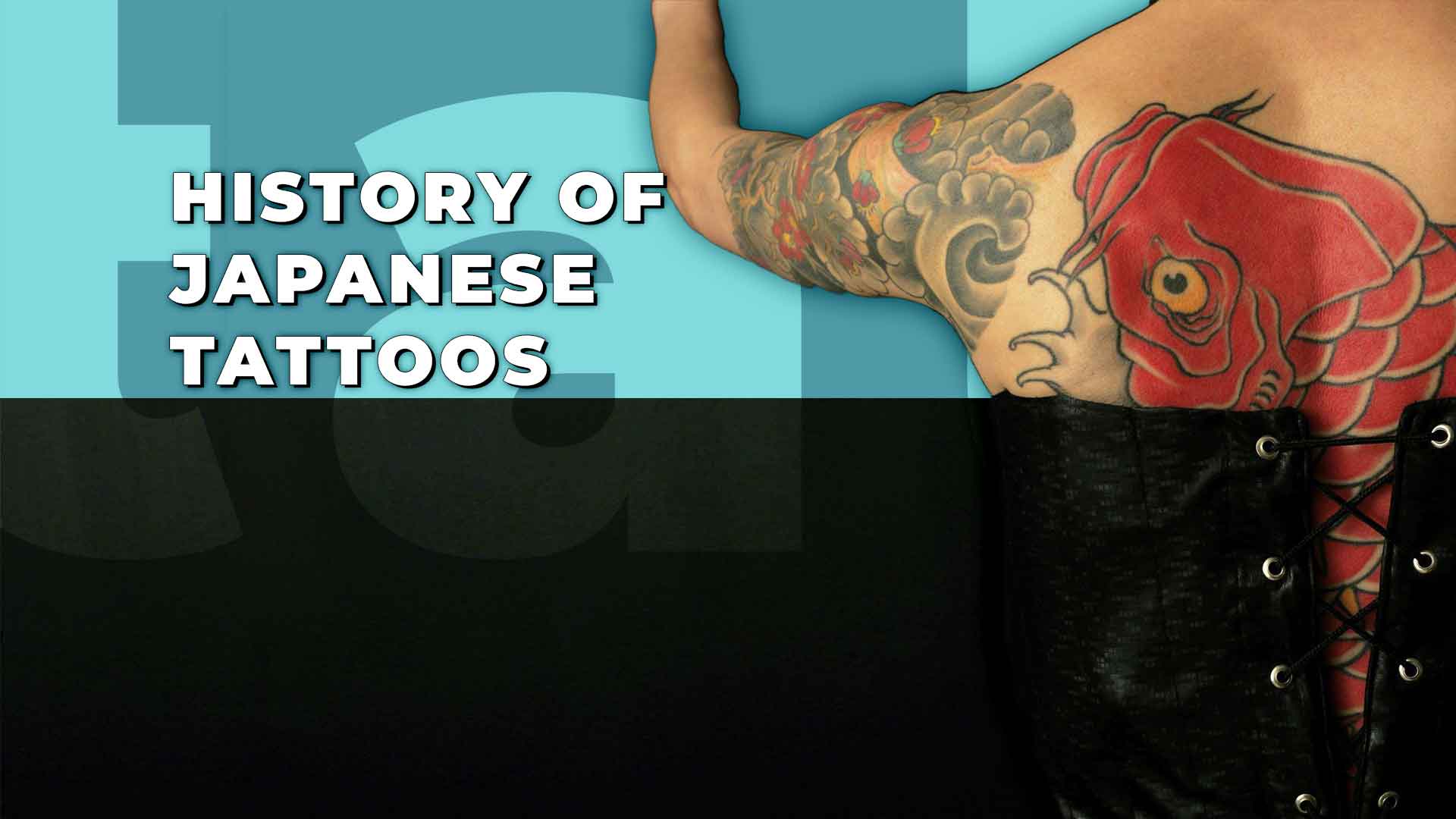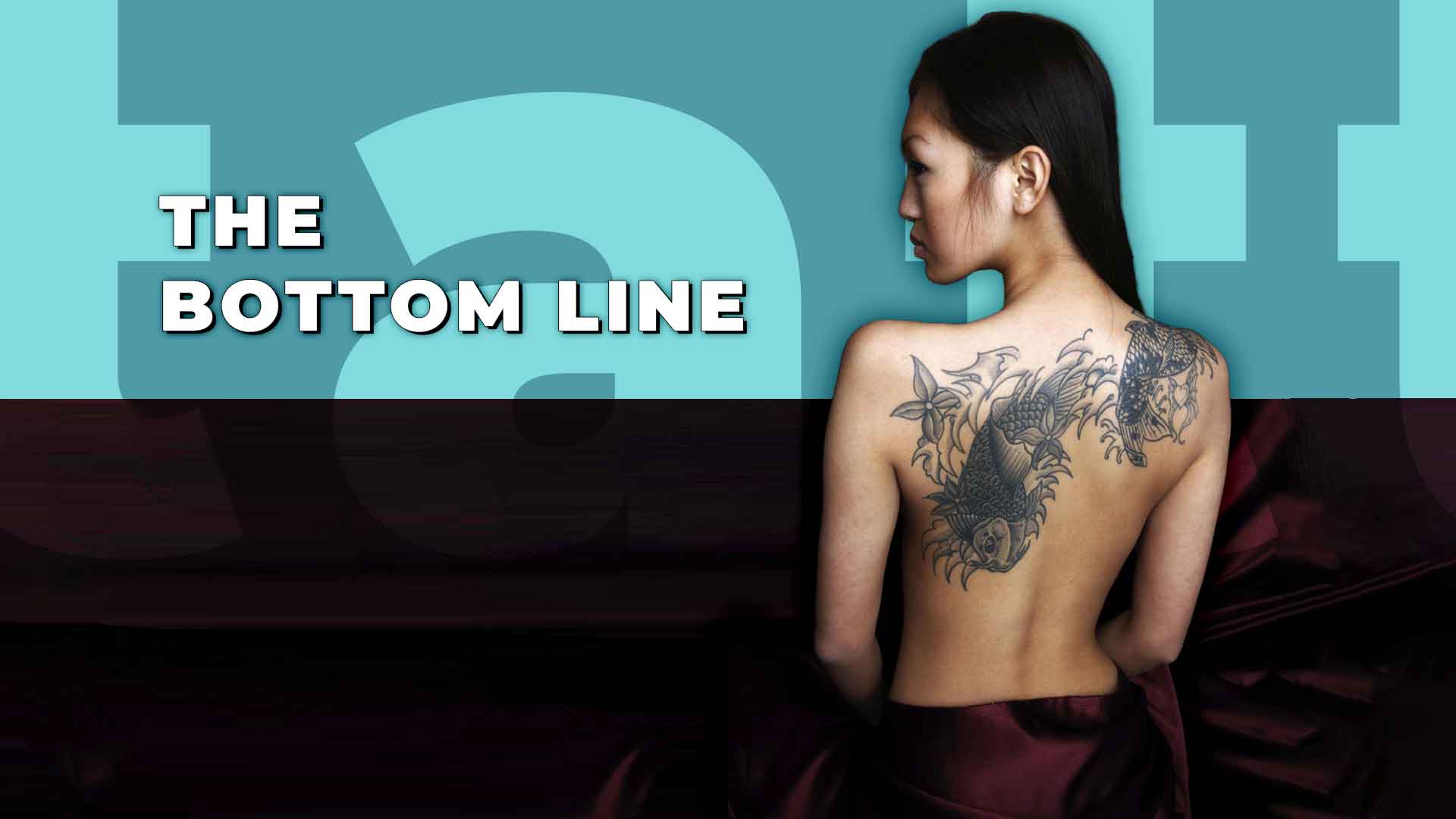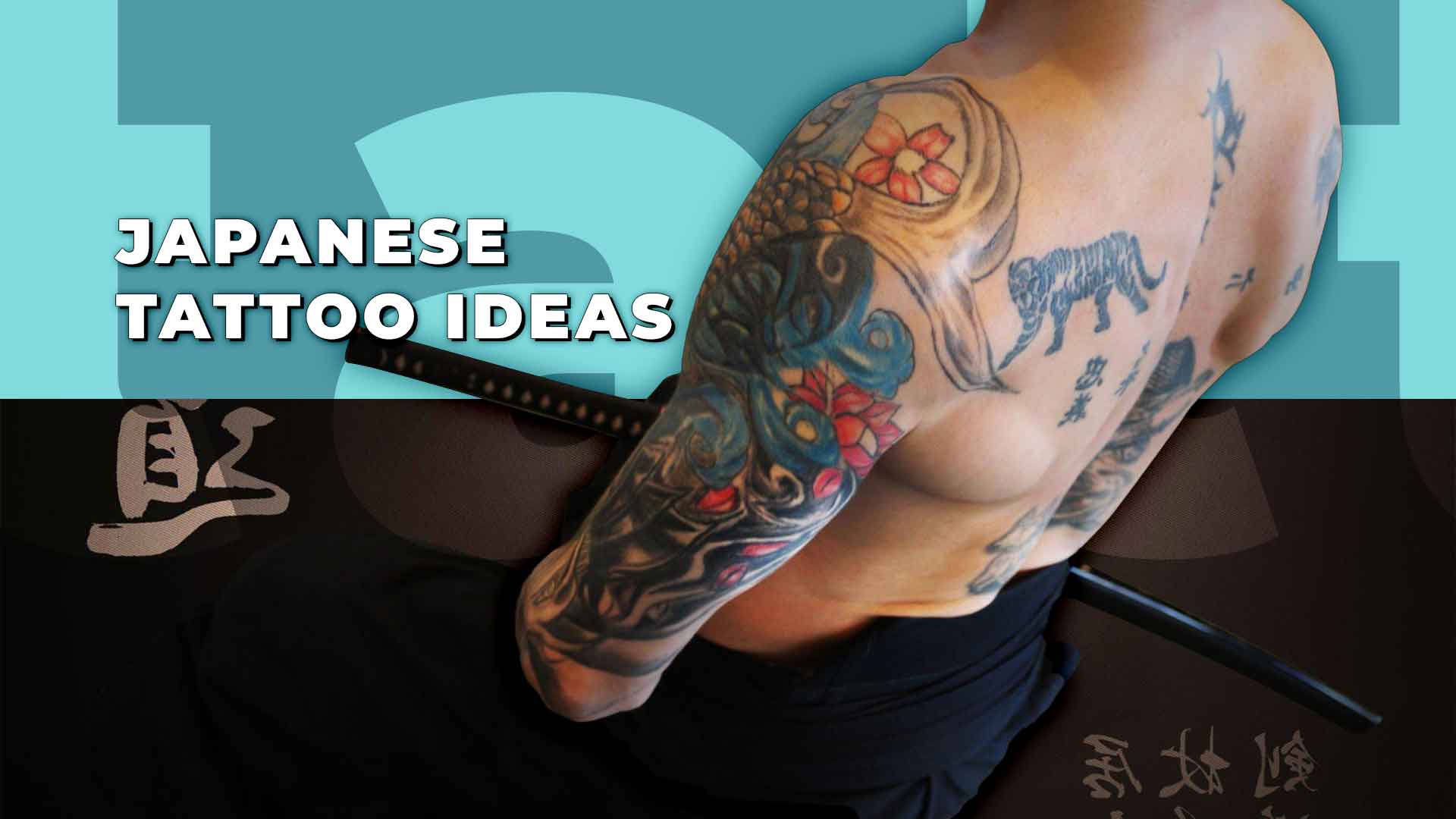Japanese tattoos are a beautiful and meaningful form of body art, rich in cultural and historical significance. They feature a variety of symbols, such as dragons, koi fish, and cherry blossoms, each with its own unique meaning. From traditional irezumi to modern interpretations, Japanese tattoos continue to inspire and captivate tattoo enthusiasts around the world.
The traditional style of Japanese tattooing, known as Irezumi, Wabori, or Harimono, originated in Japan and is characterized by distinct motifs, bold shading, and legibility. While in Europe and the United States, Japanese tattoos are often seen as large-scale standalone works such as a Japanese traditional tattoo sleeve or back pieces, the traditional application in Japan involves a single tattoo that covers the entire body like a bodysuit, including the legs, arms, torso, and back. In this style, a small strip of skin is left untouched from the collarline to the navel, so that the tattoos remain hidden when the wearer is dressed in a kimono.
In modern times, Japanese-style tattoos are not only popular among Japanese people but also among various tattoo enthusiasts who appreciate their aesthetic appeal, fluid composition, and symbolic meaning. If you’re searching for a tattoo artist with expertise in this style but don’t know where to start, we’re here to assist you in finding the perfect artist for your needs.
History of Japanese Tattoos

The history of Japanese tattoos is a fascinating topic that delves deep into the country’s past. To truly understand the art form, it’s essential to explore its origins.
Tattooing in Japan can be traced back to the Jomon period, between 10,000 and 300 BC. Although there are only a few clay figures with rudimentary tattoo designs, this is considered the earliest form of Japanese tattoos.
Fast forward to the Edo period in the 1600s, and tattoos became more popular, with some artistic expressions featuring human figures fully covered in tattoos. However, during this time, tattoos were also used to mark criminals, which gave rise to a stigma surrounding tattoos in Japanese culture.
There are different names for various concepts within the Japanese tattoo culture. Horimono refers to the traditional Japanese tattoo that began during the Edo period. The tattoo artist is called Horisi o horimonoshi o shiseshi.
Ikakubori refers to tattoos made for “bad” people, such as criminals and gang members. Irebokuro is a more sentimental type of tattoo made for different people, including Buddhist monks, courtesans, and teenagers. Irezumi, on the other hand, is the name given to tattoos made for criminals, while Suikoden is a book of illustrations that inspired traditional Japanese tattooing.
Aesthetics of Japanese Tattoos
The beauty and themes of these works are believed to have developed from the woodblock prints of the Ukiyo-e era in Japan. Ukiyo-e, which means “Pictures of the Floating World,” is deeply intertwined and referred to in much of what we recognize as Japanese art and culture.
The strikingly vivid colors, flattened viewpoints, elegant illustrative lines, and distinctive use of negative space in these prints influenced not only European painters such as Monet and Van Gogh but also art movements like Art Nouveau and even Japanese tattooing.
Colors Used in Japanese Tattoos
Japanese tattoos are not just defined by their subject matter but also by the colors used. While black-and-gray combinations are prevalent, bright colors are also a hallmark of the technique. Each color carries different symbolism, and there are various color schemes to choose from depending on your subject matter.
- Red is a vibrant color that represents strength, passion, and blood. It is also believed to ward off evil spirits and can be symbolic of peace and economic success.
- Blue, often associated with hard work, fidelity, and acceptance, is a popular color for Japanese clothing and makes for a beautiful tattoo.
- Black, viewed as masculine, is often used for lettering and is associated with mystery or mourning.
- White, a sacred color in Japan, can represent mourning and death as well as purity, peace, and honesty.
- Purple, associated with royalty and strength, was one of the most expensive colors to produce in the past.
- Pink, a feminine color, is associated with female power, beauty, and good health and is commonly used with cherry blossoms.
- Green, a color that represents nature and life, is associated with energy and vitality.
- Yellow symbolizes warmth, joy, and prosperity, and in some areas of Japan, it is considered a sacred color.
- Gold, on the other hand, is linked to power and the gods and adorns shrines and temples.
Motifs of Japanese Tattoos

Regarding motifs and subject matter, traditional Ukiyo-e designs have had a significant impact on modern tattoo art. Popular Japanese folkloric characters, masks, Buddhist deities, legendary samurai, tigers, snakes, and koi fish are some of the classic Ukiyo-e designs that we see in tattoos today.
Furthermore, mythical creatures such as Japanese dragons, kirin, kitsune, Baku, foo dogs, and phoenixes are also frequently depicted. These subjects can stand alone in the foreground or, more commonly, are paired with floral or other elements like water that exist as the background. Like many aspects of Japanese tattooing, the significance or symbolism behind the artwork is determined by factors such as the colors used, placement, and other accompanying images surrounding the main concept.
Tools Used to Create Japanese Tattoos
In the early days of tattooing in Japan, the process was performed manually by hand using a long bamboo or metal tool fitted with a needle grouping at the end. Nowadays, most artists use machines to apply Japanese tattoos; however, there are still several who continue to preserve the tradition of non-electric hand application, also known as Tebori. These artists offer the traditional method, thus keeping it alive.
Japanese Tattoo Ideas
Japanese Cat Tattoo
Tattoos of cats are popular in Japan and are associated with good fortune and wealth. There are many ways to design your cat tattoo, with some opting for a more traditional approach, while others incorporate elements of Japanese culture such as food, dress, and tattoo style. However, it’s important to avoid offensive or sacred imagery in your design.
Japanese Cherry Blossom Tattoo
Cherry blossoms are considered one of the most beautiful flowers in Japan, and their pretty pink color makes them a desirable addition to any landscape. They symbolize the impermanence of life and are connected to strength and perseverance. In Japan, the cherry blossom season is celebrated, a time associated with joy. Cherry blossom tattoos are popular in the Japanese style of Irezumi and often feature other imagery like the sun or flowers.
Japanese Cloud Tattoo
For a decorative tattoo, a Japanese cloud design may be perfect. The bold wisps, known as Kumo, can be inked alone or as fillers with other imagery. The clouds represent nature and significant ideas such as masculinity, impermanence, and change. These tattoos look best when kept dark and make a bold statement.
Japanese Crane Tattoo
The crane is a significant symbol in Japanese culture and represents peace, hope, longevity, and wisdom. It’s revered as an otherworldly creature and has been the subject of interesting legends. The design is often detailed and may include other imagery like the sun or flowers. Due to its intricate nature, it requires enough space for placement options such as the arm or thigh.
Japanese Demon Tattoo
While a demon tattoo may not appeal to everyone, it has an interesting meaning attached to it. Oni, a type of ogre or demon in Japanese folklore, is a popular image used in these tattoos. They represent the balance between good and evil and are a reminder that harmful acts will not go unpunished. The wearer may also wish to intimidate others with their body art. These tattoos are detailed and often feature other imagery, such as cherry blossoms or snakes.
Japanese Dragon Tattoo
Dragon tattoos are popular and represent bravery, strength, and wisdom in Japanese culture. Unlike in the West, where they are seen as evil or greedy, the mythical creature has significant meaning in Japan. These tattoos are best placed on the arm or leg to showcase the dragon’s shape wrapping around the limb. Different colors have different meanings, with black symbolizing wisdom and green representing nature.
Japanese Flower Tattoo
Flower tattoos are great for both men and women and can be simple or intricate designs. The lotus, peony, and cherry blossom are significant flowers in Japanese culture, and each has its symbolism. In general, flowers represent life and beauty. Japanese flower tattoos use bright colors and are often part of larger designs that include other images, such as dragons, phoenixes, or koi fish.
Tattoo Design of a Foo Dog
If you’re looking for a tattoo that symbolizes protection and good luck, a foo dog tattoo is an excellent choice. This mythical creature, which looks like a lion, holds significant cultural importance in Japan and is often used as an architectural decoration to safeguard important buildings and shrines. A foo dog tattoo can represent prosperity, good fortune, and protection and is a fascinating and meaningful design that also appeals to Western audiences.
Japanese Frog Tattoo
Japanese frog tattoos aren’t your typical amphibian designs. They feature vibrant colors and often have a fierce appearance. Some designs may include gold coins. These tattoos are not only visually striking but also rich in symbolism. The portrayal of the frog or toad and the elements you incorporate into the design can alter its meaning. However, overall, it is considered a lucky animal that brings success, prosperity, and good fortune.
Tattoos of Japanese Women
Geishas have a rich history in Japan and are associated with femininity, beauty, and grace. A tattoo of a geisha or a Japanese woman in this style can be a beautiful and meaningful design for both men and women, representing perfection, respect, and intense beauty. It is also a representation of Japanese culture. Typically, these tattoos are large and intricate, with the back being a popular placement option to provide sufficient space. You may also incorporate other traditional images, such as cherry blossoms or samurai, depending on the desired meaning.
Koi Fish Tattoo
If you’re seeking a tattoo design that symbolizes strength, achievement, success, determination, and good luck, a koi fish tattoo is an excellent choice. This is one of the most popular images used in Japanese body art because of the carp’s significance and symbolism. The colors of the koi fish can also have various meanings, such as red representing love, power, and motherhood, while black is associated with overcoming adversity and the struggle to succeed.
Japanese Symbol Tattoo
Sometimes people want to get a tattoo with a meaningful word or phrase, but they don’t want it to be easily understood by others. This is why foreign languages and symbols are often preferred. Kanji is a beautiful and symbolic choice for a tattoo, but there are some drawbacks. If you don’t understand the language, you may get inked with something that has a completely different meaning than what you intended. However, if you are inspired by Japanese culture, getting a Japanese letter tattoo may be a way to honor it.
Japanese Lion Tattoo
While lions typically represent courage, royalty, and strength, the way they are depicted in Japanese culture is different from what you would see in Africa. They have pointed ears and a wispy mane, giving them a somewhat intimidating but also mythical appearance. Lions are common statues that guard important places and are designed to ward off evil and offer protection. Your tattoo can have the same meaning, making it a strong design for those who want something fierce and powerful to keep them safe and remind them to stay on the right path.
Japanese Skull Tattoo
The Japanese skull tattoo is a symbol of transformation and can convey a sense of resilience and adaptability. While the image of a skull may be associated with death and darkness, it also represents the impermanence of life and the need to embrace change. Many people choose to add other elements to their Japanese skull tattoo, such as cherry blossoms or dragons, to personalize it and make it more meaningful.
Japanese Snake Tattoo
The Japanese snake tattoo is a popular choice for those seeking a design that embodies strength, wisdom, and transformation. Snakes are associated with shedding their skin and undergoing a metamorphosis, making them a powerful symbol of change and renewal. In Japanese culture, snakes are also believed to have healing properties and can protect against illness and misfortune. Whether you choose a coiled or slithering snake design, your Japanese snake tattoo can be a unique and meaningful addition to your body art.
Japanese Sun Tattoo
The Japanese sun tattoo is a striking design that can symbolize vitality, strength, and spiritual awakening. While the rising sun is a traditional symbol of Japan, it can also represent the cycle of life and the renewal of hope. Japanese sun tattoos often incorporate other elements, such as waves, dragons, or cherry blossoms to enhance their beauty and meaning. Whether you opt for a minimalist or elaborate design, your Japanese sun tattoo can be a powerful expression of your personal beliefs and values.
Japanese Temple Tattoo
The Japanese temple tattoo is a beautiful and meaningful design that can convey a sense of harmony, balance, and spiritual connection. Temples are often seen as a bridge between the physical and spiritual worlds, and getting a temple tattoo can be a way to express your reverence for this ancient tradition. Whether you choose a realistic or stylized design, your Japanese temple tattoo can be a powerful reminder.
Japanese Lotus Tattoo
The lotus is a popular choice for a tattoo because it is rich in symbolic value. In Japan, it is often inked on its own or with a water theme, such as a koi fish. The lotus is associated with enlightenment and spiritual awakening, as well as purity and strength. It grows in muddy waters, inspiring people to find beauty in difficult situations and to persevere.
Japanese Mask Tattoo
There are several types of Japanese masks, some worn for religious events and others for theatrical purposes and festivals. Your choice will depend on your inspiration. The Hannya mask is a popular choice for a tattoo, and while it may appear dark or scary, it is a symbol of good luck and is used to ward off evil. It also represents a woman consumed by passion and love, which can be an appealing interpretation for those who have experienced heartbreak.
Japanese Peony Tattoo
The peony is a beautiful flower often included in Japanese tattoos. It is inked in various bright colors, making for a bold and meaningful tattoo. The peony symbolizes prosperity, good fortune, life, perseverance, bravery, and honor. You can choose to get inked with a series of these blooms or add other images, such as a geisha or crane, for additional meaning.
Japanese Phoenix Tattoo
The phoenix tattoo is associated with birth, death, and rebirth. Known as the Hou-ou in Japanese culture, the phoenix is a mythical creature representing fire, justice, and power. It was used to decorate homes, and those who lived there were believed to be honest and loyal. It is a beautiful bird rich in symbolism and is one of the most popular choices for a tattoo.
Wave Tattoo
Wave tattoo is a great choice for those looking for a symbol of strength and vitality. It also represents change, as water is a constant ebb and flow. This can be interpreted as a reminder to embrace life’s ups and downs or to simply go with the flow. The wave design is typically depicted as an arch and can be inked in black and grey or blue. It is also believed to bring good luck and resilience.
Japanese Wolf Tattoo
Wolf Tattoo is a way to pay homage to Japanese culture and traditions or to show respect for the Shinto gods. The wolf is considered a strong and powerful creature and is often portrayed as a protector. In Japanese tattoos, the wolf is seen as a messenger in the spiritual world. The designs often feature an intimidating appearance, with the wolf’s fangs bared, sending a message of strength and fearlessness. It can also serve as a warning to others not to underestimate the wearer.
The Bottom Line

The artistic style and unique designs of traditional Japanese tattoos have gained worldwide fame. Unlike conventional tattoos, these tattoos are created using wooden sticks and long needles attached to silk thread, making them more expensive. Although tattooing is no longer illegal in Japan, there is still a social stigma attached to this form of body art. Nevertheless, Japanese tattoo designs are known for their breathtaking beauty and stunning appearance.


